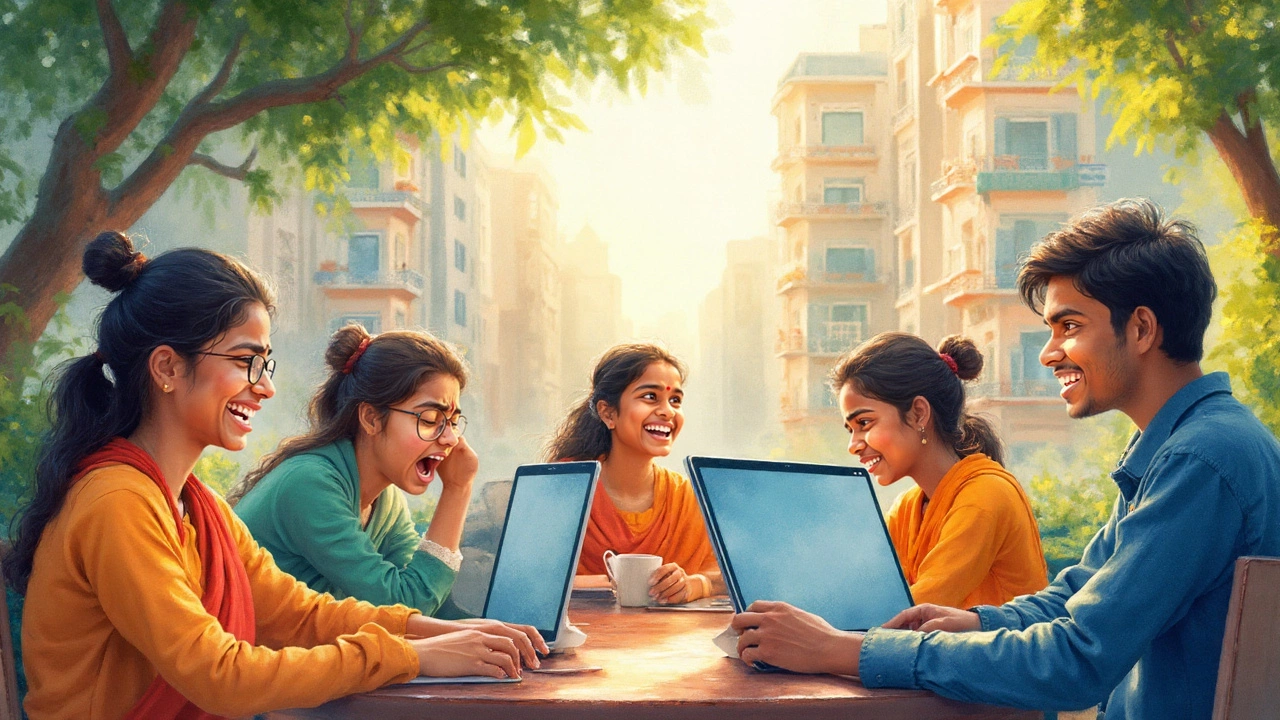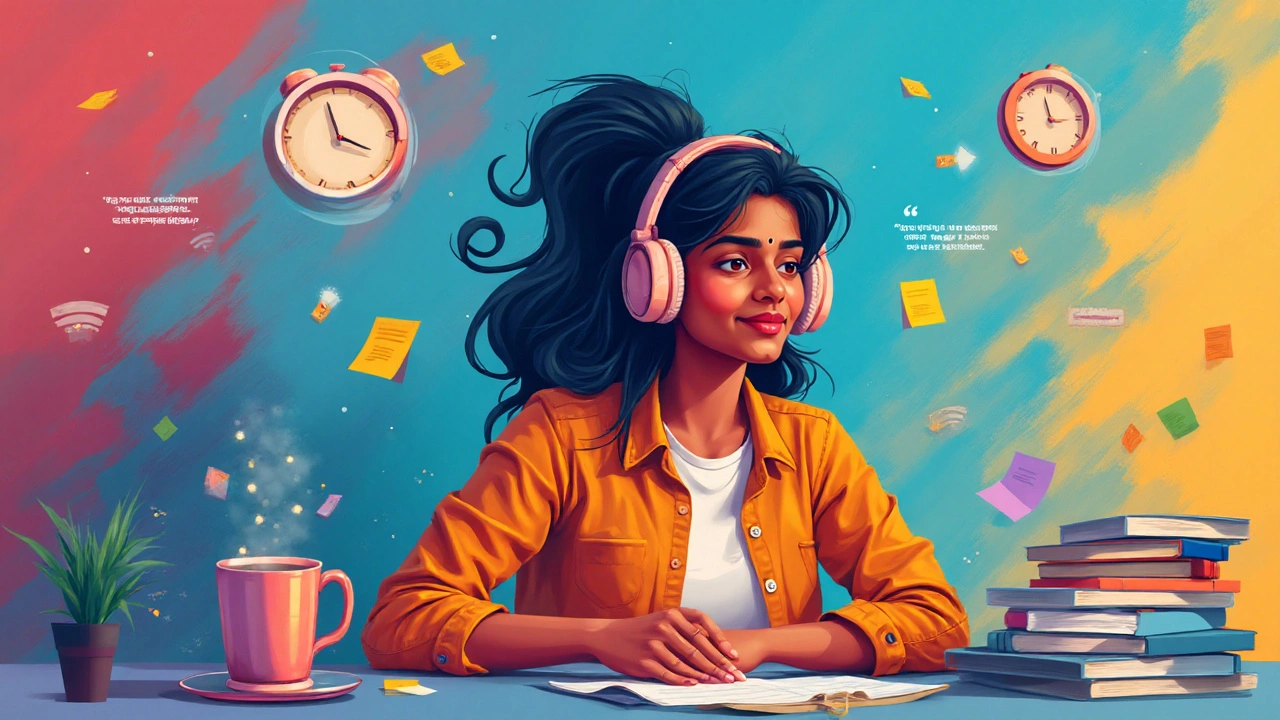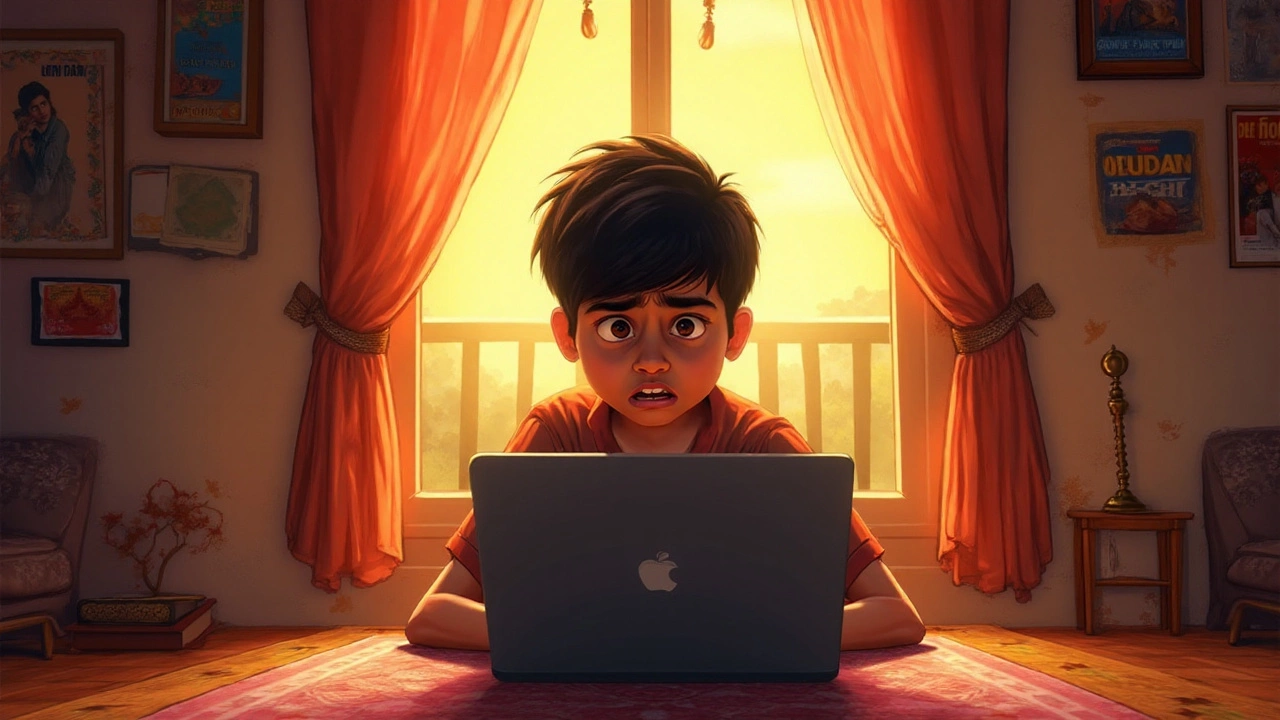Imagine you're in the middle of an important class, hanging on every word. Suddenly, your screen freezes, or the teacher's voice starts sounding like a broken robot. That's not just annoying—it can totally wreck focus and kill motivation. Millions of students deal with this every day as e-learning becomes part of normal life. Despite the hype around flexibility and cool apps, digital learning comes with some serious hurdles. Not everyone gets the same experience, and believe it or not, there's one issue that knocks all the others out of the park.
The Real Core Problem: Lack of Human Connection
Most people think technical problems are the main obstacle with e-learning, but let's get real—the biggest issue for most students is feeling isolated. No classroom buzz, no laughing at a friend's joke, no raised hands competing for the teacher's attention. It makes learning lonely. Research from 2024 by the Indian Council for Academic Research showed that e-learning problems top the list of student complaints, with "lack of human interaction" cited by 67% of surveyed students. Connection is how we stay motivated, how doubts melt away, and how deep understanding happens. Take a second: When was the last time you had a genuine group discussion in a virtual class where everyone cared instead of just nodding along?
If you feel like a ghost in the Zoom grid, you're definitely not alone. There are stats to back this up. A Cambridge study in late 2023 found students in entirely online classes scored lower in engagement and discussion quality than those in even partially hybrid models. Teachers admit it's way harder to spot when someone's lost or confused in a sea of muted mics and turned-off cameras. Sure, chats and forums exist, but they're not the same as spontaneous side chatter or forming study groups on the way back from class.
The impact? More dropouts, more shallow understanding, and less enjoyment. Chennai-based ed-tech startup TutorMitra ran a year-long review and found 38% higher dropout rates in fully remote courses compared to regular classrooms. When you aren't excited to learn with others, it's easy to skip lessons or zone out. Even group assignments become awkward when nobody feels connected.
Can you do something about this? Yes, but it takes effort. Here's what helps: always switch your camera on (unless you're out of bandwidth), use smaller breakout rooms during lessons for honest chats, and if possible, set up in-person or WhatsApp study groups. Teachers, too, need to shake things up—adding interactive polls, requesting video responses instead of typed ones, or creating virtual "open office hours" where students can drop in randomly, just like catching a teacher in the hall. It's not exactly like being in the same room, but it moves the needle in the right direction.
Tech Woes: The Giant Digital Divide
The cool part about online classes is you can technically study from anywhere—but that's a huge "technically." The digital divide is a stubborn, harsh reality. In India alone, reliable internet isn't a guarantee. According to a 2024 TRAI report, about 45% of rural households still struggle with patchy connections for live video lessons. It's hard to ace a quiz when your call keeps cutting out, or when you have to watch recorded lectures later with none of the real-time magic.
And it's not just about the internet. Devices matter. A laptop with a broken webcam or a basic smartphone with little screen real estate can make all the difference between feeling included or left behind. An insightful National Sample Survey Office (NSSO) report showed that by early 2025, only 38% of secondary school students in India had reliable access to a personal computer at home—not shared with the rest of the family. That means your little sister might be fighting you for screen time, or your classmate is squinting to read slides on a four-inch phone.
Check out how the hardware gap plays out with real numbers:
| Device | % Students with Reliable Access | % Reporting Major Challenges |
|---|---|---|
| Laptop/Desktop | 38% | 61% |
| Smartphone Only | 55% | 84% |
| No Personal Device | 7% | 100% |
There are some quick tech fixes. Ask for smaller, easily downloadable files instead of heavy video streams; educators should provide options for audio-only formats. If you’re struggling, talk to your school about community device-lending programs—some colleges in Chennai loan tablets or internet dongles for the semester. Don’t forget public libraries and government hubs, which are beefing up their digital presence since 2023. But sometimes, tech problems are just hard stop barriers that good intentions can't bulldoze.

Self-Discipline and Distraction: The Silent Killers
There's nobody pacing the rows in your living room. No teacher's glare when you check Instagram during biology. That freedom sounds liberating, but it turns out, most of us are pretty bad at holding ourselves accountable. In a New Delhi experiment last year, 500 students tried monitoring their productivity in online classes. Over 70% admitted to getting sidetracked by YouTube, gaming, or just scrolling memes during lessons at least once a week. Self-discipline isn't magic; it's a habit you have to build, and it might be the hardest skill in the e-learning world.
No one likes to talk about it, but digital learning often turns into multitasking disaster. An MIT study in 2024 found that even short interruptions—like replying to a WhatsApp ping—can double the error rate on simple math problems. You might think you can listen to a lecture and chat at the same time, but your brain is wired for single-task focus. That's why you finish a session and barely remember what was taught.
Discipline gets even harder with a home full of distractions. Younger siblings, the fridge, and street noise don’t help. So, what works? Try making a fixed workspace—as small as a corner or a table—where you only study. Set a routine, not just for classes but also for breaks. Use digital tools that help (instead of hurt): apps like Forest block distracting sites, and apps like Todoist keep you honest about daily tasks. Pair up with a "study buddy" who checks in just to ask if you showed up for class. Sometimes, you need someone else to remind you to stay on track.
Content Overload and Uneven Quality
Online learning platforms toss you into a sea of content—live lectures, uploaded assignments, never-ending slides, and digital textbooks. But more content doesn't always make for better learning. In fact, you can burn out fast. The EdTech Review journal published findings that students in fully online systems spend about 30% more time reviewing materials just to stay caught up compared to their peers in regular schools. That means it's easy to get lost or overwhelmed, clicking between tabs, never sure you've learned what matters most.
The other issue is glaring inconsistency. Some teachers put up thoughtful, high-quality videos—they pause, explain, ask for feedback. Others just dump PDFs and call it a day. Online platforms vary wildly. For example, the same curriculum run through different EdTech firms in India had pass rates ranging from 51% to 84% last year, depending largely on how interactive and clear the materials were. Students end up hunting for YouTube tutorials or TED Talks just to bridge the gap.
Tips for surviving this mess? Start by prioritizing—make a short list of "must study" materials before you dive in. Don't be afraid to ask teachers to clarify when things are confusing or incomplete. And remember, the best content is often accessible for free if you know where to look—top universities like IIT Madras offer open lectures, and even LinkedIn Learning provides student discounts. Use official discussion forums for tough concepts, or find trusted Telegram groups for your subject. Get help from your network instead of drowning alone in digital files.

Assessment Anxiety and Lack of Feedback
Finally, e-learning has completely flipped how assessments work. Online quizzes and auto-graded assignments are fast—but they often feel robotic and unsatisfying. If you flunk a quiz, did you mess up because you didn't know the material, or because the Wi-Fi lagged during your answer? That's a pretty common frustration. Students across Chennai reported in a 2025 poll that 64% felt online exams did not measure their knowledge as well as in-person written tests.
The other problem is lack of feedback. You submit work and get a score, maybe a short comment, but not the deep dive you get from a teacher sitting across from you. Students learn best from detailed, actionable feedback—not generic "good job" stickers. Plus, cheating has become easier than ever, and that's stressful for everyone. Exam proctoring tools sometimes feel intrusive or even glitchy, flagging honest students for suspicious eye movement. It’s tough to build confidence in a system that doesn’t always feel fair.
Here's what to do if you feel stuck: First, reach out to teachers directly for detailed feedback, especially on big assignments. Take advantage of any one-on-one office hours, whether by call or chat. If you're struggling with test anxiety, try taking practice quizzes (plenty of free ones exist for most subjects). And find out which assessment methods work for you—some schools offer verbal viva or project-based grading options.
Remember, technology should help, not hurt. The best schools now blend different evaluation types—short quizzes, open-book assignments, group projects, and video presentations—to cover all learning styles. If yours doesn't, share your experience with course leaders. Your voice matters, and sometimes, it only takes a few emails to spark better practices for everyone.
